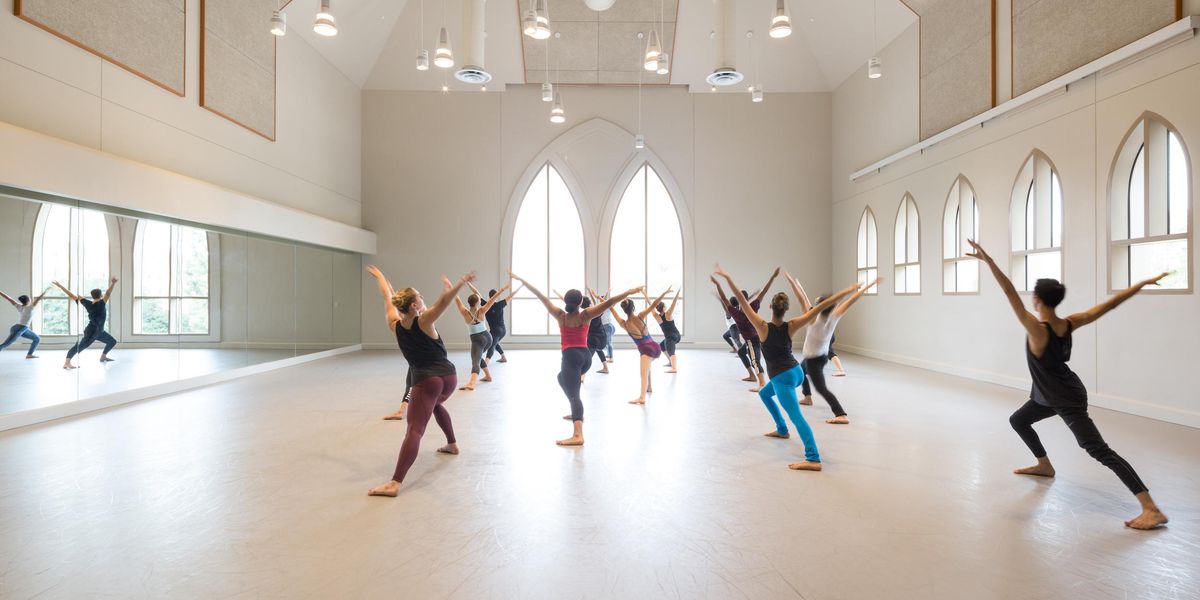On Broadway
What color is her parachute? Bahiyah Sayyed Gaines makes her Broadway debut in
Purple.
Bahiyah Sayyed Gaines uses a single sentence to explain her decision to walk away from life as a principal in the Alvin Ailey American Dance Theater: “I had a baby,” she says. Late last fall, sitting in an empty theater between the matinee and evening performances of The Color Purple, Sayyed Gaines (who was one of DM’s “25 to Watch” in 2001) discussed going from lead roles with one of the country’s most successful dance troupes to a spot in an ensemble in the famously unpredictable world of Broadway musicals.
The sizzling glamour she brought to the Ailey canon and the technical chops that she put at the service of contemporary choreographers were all but invisible in an early preview of Marsha Norman’s adaptation of the Pulitzer Prize winning Alice Walker novel. Despite cheering audiences and the imprimatur of Oprah Winfrey, the show’s lead producer, there’s no telling how long after the December opening Sayyad Gaines will have a job. And with its rural South setting, and a powerless, abused black woman at its center—albeit one who eventually learns the value of her own life—The Color Purple wouldn’t seem to lend itself to showy choreography. Broadway first-timer Donald Byrd has only a couple of opportunities to put really full-out dancing on the stage: there’s a ribald scene in a local juke joint, and a lively production number set in an African village. The closest Sayyed Gaines comes to being front and center is a brief moment at the end, when, in a wordless walk-on, she plays the central character’s long-lost daughter, grown up and come home.
She doesn’t mind. She has other compensations. For example, between shows at the Broadway Theater, she is awaiting the arrival of her dinner (coming from a nearby Chinese restaurant) and of her husband and son (coming from their house in Brooklyn). “Ailey was a lot of traveling, a lot of being away from home,” she says. “With this, I can come home to my family every night. No foreign beds, no foreign foods.” Having been brought up as a vegetarian, first in Brooklyn and then in Baltimore, she found the touring life especially trying on the food front. But her original plan was nevertheless to go back to Ailey four or five months after she and her husband, Jamel Gaines, had their first child, in November of 2004. She’d watched other Ailey dancers manage a family and a career, and thought she would do the same, leaving the baby at home with Gaines, the founder and director of Creative Outlet Dance Theatre of Brooklyn. But when their son, Soleil, was born, her priorities changed. “Artists can be really selfish,” she says. “It can be all about me. But when I had a baby, I wanted to be so there for him.”
When the time came to return to Ailey, she says, “I wasn’t ready, either physically or mentally.” Judith Jamison, the artistic director of the Ailey company, “was great,” Sayyed Gaines says, and encouraged her to go with her gut instinct, which was to stay home with Soleil for a while and reassess her options. She’d always wanted to try Broadway, and when she heard that Byrd, with whom she’d worked on new pieces for Ailey, was choreographing Color Purple, she called him and said she was interested.
That was the easy part. Sayyed Gaines, 31, says that she’ll need another few months to feel fully, totally in shape. And there are mental readjustments to be made as well. “It’s nice to be getting the paycheck,” she says. “It’s no secret that concert dancers are at the bottom of the arts ladder.” Broadway, she finds, has a different mindset. As a onetime union rep during her days with Ailey, she felt strongly about the protections provided by a union contract. But during Color Purple rehearsals, she began noticing that whenever something troublesome occurred, “the dancers would all huddle together and talk to each other about it,” she says. “But the actors and the musicians would just speak up and say, ‘Uh, I have a problem with that.’ ”
“I know a lot of intelligent, articulate dancers,” she continues. “But because dance is not a vocal art form, we’re not trained to speak out. When you’re just silent, you can be taken for a ride. But there’s no reason why we should be talked down to.”
The other side of not being vocal, of course, is that she can be handed a brief walk-on, like the one she has in Color Purple, and do more than just stand there taking up space. “That kind of acting comes easy,” she says, “when you’re used to expressing yourself physically.”
And the singing part of the job doesn’t scare her either. “My mother was a singer,” she says, “and I was always singing.” Once the show is open, she says, and her days are free, Sayyed Gaines plans to take voice lessons and position herself for whatever other Broadway opportunities come along. A former Ailey colleague, Krisha Marcano, has been racking up musical theater credits and has a featured role in Color Purple. “She has her own dressing room!” Sayyed Gaines says. And she serves as a daily reminder that it’s possible to move from the concert dance world into acting-singing-dancing roles on Broadway. “I’m looking ahead,” Sayyed Gaines says. “I’m learning every day on this show. And I want to feel I can do anything.”
Sylviane Gold has written about theater for
Newsday and The New York Times.




